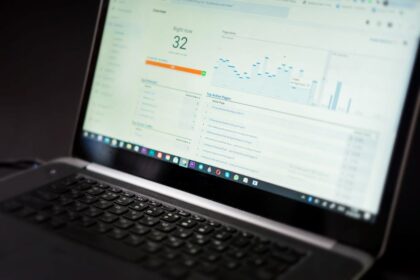Image Alt Text: Boosting Your On-Page SEO
Understanding the fundamental role of image alt text in the expansive landscape of search engine optimization is paramount for any digital marketing professional, content creator, or website owner striving for enhanced online visibility. Often underestimated, or relegated to an afterthought, alt text—also known as alt attributes, alt descriptions, or alternative text—serves as a critical textual descriptor for visual content on the web. Its primary function is multifaceted: it provides accessibility for users who cannot see images, enhances the user experience, and, crucially, offers a significant conduit for search engines to comprehend and index visual elements, thereby directly contributing to on-page SEO efficacy. Without proper alt text, a substantial portion of a website’s content, specifically its imagery, remains largely invisible and unintelligible to search engine crawlers, squandering valuable opportunities for keyword relevance, organic ranking, and improved site authority.
The Foundational Importance of Alt Text for Search Engines
Search engines, despite their advanced algorithms and burgeoning capabilities in image recognition, still predominantly rely on text to understand content. While Google’s Vision AI and similar technologies are making strides, they are not yet infallible nor universally applied across all image types and contexts. This is where alt text steps in as a vital bridge. When a search engine bot, such as Googlebot, crawls a webpage, it encounters various HTML elements. For images, the alt attribute provides the textual equivalent. Without this attribute, or with a poorly optimized one, the image presents itself as a blank canvas of data to the crawler, offering no semantic meaning or contextual clues.
The alt attribute’s content allows search engines to:
- Understand Image Context and Content: By reading the alt text, a search engine can deduce what the image depicts, its relevance to the surrounding text, and its overall contribution to the page’s topic. This understanding is crucial for thematic consistency and for associating the image with relevant search queries. For instance, an image of a “vintage blue bicycle with a wicker basket” accompanied by descriptive alt text helps the search engine categorize it not just as an image, but as an image specifically depicting a vintage blue bicycle, making it discoverable for searches related to that specific item.
- Determine Keyword Relevance: Alt text provides a prime opportunity to naturally integrate target keywords and long-tail variations. When an image’s alt text contains keywords relevant to the page’s primary topic, it reinforces the page’s overall thematic focus for search engines. This strengthens the on-page keyword signals, indicating to Google that the page is highly relevant to those terms. This is particularly powerful when images are used to illustrate key points discussed in the main content. For example, on a page about “sustainable urban gardening,” an image of a “composting bin with kitchen scraps” with alt text “eco-friendly composting bin for sustainable urban gardening” actively contributes to the page’s keyword density and relevance for “sustainable urban gardening” and related terms.
- Enhance Image Search Visibility: Beyond traditional web search, alt text is the cornerstone of image search engine optimization. When users conduct image searches on platforms like Google Images, the primary data points used for ranking and display are the image’s file name, surrounding text, captions, and most importantly, its alt text. A well-optimized alt text can propel an image to the top of image search results, driving significant traffic to the host page. This is particularly valuable for e-commerce sites, photographers, designers, and any business relying heavily on visual content to showcase products or services. Imagine a user searching for “best hiking trails in Patagonia”; if your travel blog has an image of “Torres del Paine peaks at sunrise” with an appropriate alt text, your image is far more likely to appear in the image search results, leading the user directly to your detailed blog post.
- Improve Overall Page Comprehension: Search engines analyze a webpage holistically. The combination of title tags, meta descriptions, headings, body text, internal links, and image alt text paints a complete picture of the page’s content. Consistent and coherent messaging across all these elements, including alt text, improves the search engine’s confidence in understanding the page’s purpose and its relevance to specific queries. This holistic comprehension contributes to higher ranking potential. A page discussing “The Benefits of Mediterranean Diet for Heart Health” should have images like “fresh vegetables and olive oil for Mediterranean diet” or “heart-healthy whole grains on Mediterranean plate” with alt text that reiterates these concepts, strengthening the thematic signals for the entire page.
The Indispensable Role of Alt Text in Web Accessibility
While its SEO benefits are substantial, the original and arguably most critical purpose of alt text lies in web accessibility. The internet is meant to be accessible to everyone, regardless of their physical or cognitive abilities. For individuals who are visually impaired or blind, images pose a significant barrier without textual alternatives.
Here’s how alt text addresses this critical need:
- Screen Reader Functionality: Screen readers are assistive technologies that convert on-screen content into speech or braille. When a screen reader encounters an image on a webpage, it looks for the alt attribute. If present, it reads the alt text aloud, describing the image to the user. This allows visually impaired users to understand the visual information conveyed by the image, ensuring they don’t miss out on crucial content or context. Without alt text, the screen reader might simply announce “image,” or read the file name, which is often unhelpful and meaningless. For an e-commerce site, imagine a user trying to understand a product page. If an image of a “red leather handbag with gold clasp” has no alt text, a visually impaired user cannot know what the product looks like, hindering their purchasing decision. With proper alt text, they gain that crucial descriptive information.
- Compliance with Accessibility Standards: Web Content Accessibility Guidelines (WCAG) are a set of internationally recognized standards for web accessibility. WCAG 2.1, specifically Guideline 1.1 Text Alternatives, mandates that “All non-text content that is presented to the user has a text alternative that serves the equivalent purpose.” Alt text is the primary method for fulfilling this requirement for images. Adhering to WCAG standards is not just a matter of ethical responsibility but is increasingly becoming a legal requirement in many jurisdictions. Non-compliance can lead to lawsuits and reputational damage.
- Improved User Experience for All: Even for users without visual impairments, alt text provides value. If an image fails to load due to slow internet connections, server issues, or incorrect file paths, the alt text is displayed in its place. This placeholder text offers context and ensures that the user still gets an idea of what the missing image was supposed to convey, preventing a broken or confusing experience. Imagine a news article where images fail to load. If the alt text reads “Protestors gathered outside parliament,” the user still understands the visual context, even without seeing the image.
- Assists Users with Cognitive Disabilities: While primarily for visual impairments, the clarity and conciseness required for good alt text can indirectly benefit users with certain cognitive disabilities by providing direct and unambiguous descriptions that complement the surrounding text, reducing cognitive load.
Best Practices for Crafting Effective Alt Text for SEO and Accessibility
Developing high-quality alt text is an art and a science, balancing descriptive accuracy with keyword integration and conciseness. Here are detailed best practices:
-
Be Descriptive and Specific: The alt text should accurately describe the visual content of the image. Think about what a visually impaired person needs to know about the image to understand its context within the page.
- Bad Example:
alt="dog"(Too generic. Could be any dog.) - Better Example:
alt="Golden Retriever puppy playing with a red ball in a grassy park"(Much more specific, paints a clearer picture, and includes potential keywords like “Golden Retriever,” “puppy,” “red ball,” “park.”) - Elaboration: Avoid vague terms. If it’s a product, describe its color, texture, unique features, and even the material if relevant. For a chart, summarize the key takeaway or the data it represents. For a screenshot, describe what the user sees in the screenshot. The more descriptive, the more useful it is for both search engines and users.
- Bad Example:
-
Incorporate Relevant Keywords Naturally: While description is key, strategic keyword placement is equally important for SEO. Identify primary and secondary keywords for the page, and see if they can be seamlessly integrated into the alt text without sounding forced or unnatural.
- Example Page Topic: “The Best Espresso Machines for Home Baristas”
- Image: A sleek, stainless steel espresso machine with a frothing wand.
- Bad Alt Text:
alt="espresso machine"oralt="espresso machine best home barista espresso machine"(Keyword stuffing). - Good Alt Text:
alt="Stainless steel espresso machine with steam wand, ideal for home baristas"(Describes the image and naturally includes relevant keywords “espresso machine,” “home baristas”). - Elaboration: The goal is to provide context. If the image depicts something central to your keyword strategy, use the keyword. If it’s a supporting image, use a keyword that relates to its specific visual content. Avoid keyword stuffing, which is the practice of excessively loading keywords into your alt text in an attempt to manipulate search engine rankings. This practice is detrimental to both user experience and SEO, as search engines can penalize sites for such tactics.
-
Keep it Concise, but Comprehensive: Aim for brevity, but don’t sacrifice descriptive quality. Most sources suggest a length of around 125 characters, though this is not a strict rule. Screen readers typically cut off alt text at a certain length, so prioritize the most important information first.
- Example: For an image of “a vibrant coral reef with tropical fish swimming through colorful anemones.”
- Too Long/Wordy:
alt="This is a breathtaking image of a very vibrant coral reef located in the warm waters of the Caribbean Sea, featuring several species of tropical fish, including clownfish and angelfish, gracefully swimming among various types of colorful anemones and hard corals, demonstrating the rich biodiversity of marine life in healthy ocean ecosystems."(Excessive detail, goes beyond visual description). - Concise & Comprehensive:
alt="Vibrant coral reef with tropical fish swimming through colorful anemones"(Captures the essence). - Elaboration: Think of it as a tweet about the image. What are the essential visual elements and their immediate context? If an image is very complex (like an infographic), you might need more detail, or consider supplementing with a longer description in the caption or surrounding text, while the alt text provides a concise summary.
-
Avoid “Image of,” “Picture of,” or “Photo of”: It’s redundant. Screen readers already announce that it’s an image.
- Bad Example:
alt="Image of a red apple" - Good Example:
alt="Red apple" - Elaboration: Get straight to the point. The context of being an image is implicitly understood by the
- Bad Example:
-
Use Empty Alt Text for Decorative Images: If an image is purely decorative and conveys no meaningful information (e.g., a background texture, a generic divider line, a purely aesthetic swirl), use an empty or null alt attribute:
alt="". This tells screen readers to skip the image, preventing unnecessary clutter in their output.- Example: A small, generic icon next to a heading purely for visual flair.
- Correct:

- Incorrect:

- Elaboration: The key is “meaningful information.” If removing the image would not diminish the understanding of the surrounding content, then it’s decorative. If it adds even a small piece of information, it needs alt text.
-
Contextual Relevance is Key: The alt text should always be relevant to the surrounding content on the page. An image’s alt text shouldn’t introduce new, unrelated keywords. It should reinforce the theme and message of the text it accompanies.
- Page Content: A blog post about “the benefits of meditation for stress reduction.”
- Image: A person sitting in the lotus position, meditating.
- Relevant Alt Text:
alt="Person meditating in lotus position for stress reduction" - Irrelevant Alt Text:
alt="Yoga pose for flexibility"(While related to wellness, it doesn’t align with the page’s specific focus on meditation and stress reduction). - Elaboration: Search engines analyze the entire page’s context. An alt text that is out of context can confuse the algorithm and dilute the page’s topical authority.
-
Consider the User’s Intent: When crafting alt text, think about what a user searching for this image (or the content it illustrates) might type into a search engine. This helps in naturally integrating relevant keywords and phrases that align with user queries.
- Example: A food blog with an image of a homemade sourdough loaf.
- User Intent Keywords: “sourdough bread recipe,” “how to bake sourdough,” “crusty sourdough loaf.”
- Alt Text:
alt="Freshly baked crusty sourdough loaf on a cooling rack for homemade bread recipe"(Addresses visual, keywords, and user intent).
Special Considerations for Different Image Types
The approach to alt text can vary slightly depending on the type and purpose of the image.
-
Product Images (E-commerce):
- Focus: Detail, unique selling points, brand names, model numbers, color, material, texture.
- Example: For a product image of a “Nike Air Zoom Pegasus 38 running shoe in men’s size 10, black with white swoosh.”
- Alt Text:
alt="Nike Air Zoom Pegasus 38 men's running shoe, black size 10, with white Nike swoosh" - Elaboration: These are critical for e-commerce SEO. Users often search for products directly via image search. The more specific and keyword-rich (within reason) the alt text, the better. Consider including aspects like “front view,” “side view,” “detail shot,” if relevant for multiple product images.
-
Infographics and Charts:
- Focus: Summarize the key data or insight conveyed. If the infographic is complex, provide a concise summary in the alt text and a more detailed description in the caption or surrounding text, or link to a separate page/transcript.
- Example: An infographic showing “Global Carbon Emissions by Sector, 2023.”
- Alt Text:
alt="Infographic: Global carbon emissions by sector in 2023, showing highest emissions from energy production and transportation" - Elaboration: Do not try to describe every single data point in the alt text. The goal is to provide the “gist” or the primary conclusion. For very data-dense visuals, consider offering a link to a data table or a text-based summary.
-
Graphs and Data Visualizations:
- Focus: State the type of graph, what it represents, and its main trend or conclusion.
- Example: A line graph showing “Website traffic growth over 12 months.”
- Alt Text:
alt="Line graph showing a steady increase in website traffic over the past 12 months" - Elaboration: Similar to infographics, summarize the key takeaway without getting bogged down in individual data points.
-
Screenshots:
- Focus: Describe what the screenshot illustrates or the specific action/feature it’s showing.
- Example: A screenshot of a “WordPress dashboard with a new post editor open.”
- Alt Text:
alt="Screenshot of WordPress dashboard showing the Gutenberg block editor for a new post" - Elaboration: Be precise about the context of the screenshot.
-
Author Photos/Portraits:
- Focus: Name of the person, their title or role.
- Example: An author’s headshot.
- Alt Text:
alt="John Doe, Senior SEO Specialist at Example Company" - Elaboration: Helps build personal brand recognition and provides context.
-
Hero Images / Banners:
- Focus: The main visual message of the banner, often aligned with the page’s primary headline and purpose.
- Example: A hero image on a travel site’s homepage: “Family hiking in a mountain landscape.”
- Alt Text:
alt="Family enjoying a scenic hike in the Rocky Mountains, promoting adventure travel" - Elaboration: These are often highly visible and should convey the page’s core offering.
Common Alt Text Mistakes to Avoid
Understanding what to do is important, but knowing what not to do is equally critical to prevent detrimental effects on your SEO and accessibility.
-
Keyword Stuffing: As mentioned, avoid cramming too many keywords into your alt text. This is an outdated SEO tactic that can harm your rankings and makes your content sound unnatural and unhelpful to screen reader users. Google’s algorithms are sophisticated enough to detect and penalize this.
- Example of Keyword Stuffing:
alt="best SEO tips SEO strategy digital marketing SEO best practices on-page SEO image alt text search engine optimization ranking boost"(This is unreadable and offers no real description of an image).
- Example of Keyword Stuffing:
-
Missing Alt Text: Leaving the alt attribute completely empty (

alt=""oralt="description") is a major oversight. This is a missed SEO opportunity and a significant accessibility barrier. Screen readers will often skip the image entirely or read out the file name, which is rarely helpful. -
Generic Alt Text: While better than nothing, alt text like
alt="image"oralt="picture"provides no value to search engines or users. It’s a wasted opportunity. -
Duplicating Captions or Surrounding Text: If you have a detailed caption right below the image, the alt text shouldn’t simply repeat it verbatim. The alt text should provide a concise description, while the caption can offer more context, credits, or additional information.
- Image: A team working in an office.
- Caption: “Our dedicated team collaborating on the new project proposal in our modern office space.”
- Bad Alt Text:
alt="Our dedicated team collaborating on the new project proposal in our modern office space." - Good Alt Text:
alt="Team members collaborating in a modern office environment"
-
Focusing Only on SEO, Ignoring Accessibility: While this article emphasizes SEO, remember that alt text’s primary purpose is accessibility. Alt text that is unintelligible to a screen reader user, even if keyword-rich, defeats its core purpose. A balanced approach is crucial. Prioritize clear description first, then integrate keywords naturally.
-
Using File Names as Alt Text: While file names are important for SEO, they are rarely descriptive enough to serve as good alt text, especially if they contain underscores, dashes, or cryptic codes.
- File Name:
IMG_0023.jpg - Bad Alt Text:
alt="IMG_0023.jpg"
- File Name:
Auditing and Optimizing Existing Alt Text
For established websites, it’s not enough to simply implement good alt text going forward. A comprehensive audit of existing image alt text is essential to uncover missed opportunities and correct errors.
-
Manual Review: For smaller sites, a manual review of each page and its images is feasible. This allows for qualitative assessment of relevance and descriptiveness.
-
SEO Tools:
- Screaming Frog SEO Spider: This powerful crawling tool can identify images with missing alt text, duplicate alt text, or alt text that is too long. It extracts all image data, making it easy to spot issues in bulk. You can then export the data and prioritize fixes.
- SEMrush / Ahrefs / Moz: While primarily site audit tools, they often include checks for missing alt text as part of their comprehensive reports. They can help identify pages with the most egregious alt text issues.
- Google Search Console (GSC): GSC doesn’t directly report on alt text, but improvements in image search performance or overall page rankings after alt text optimization can be observed here. Core Web Vitals reports can indirectly highlight image loading issues that might prompt a review of image optimization, including alt text.
-
Accessibility Checkers: Tools like Lighthouse (built into Chrome DevTools), AXE DevTools, or WAVE Web Accessibility Evaluation Tool can highlight missing alt text and other accessibility issues. Running these checks provides a different, but equally important, perspective on your alt text quality.
-
CMS-Specific Tools/Plugins: Many content management systems (CMS) like WordPress have plugins (e.g., Yoast SEO, Rank Math, Smush) that offer features for managing and auditing image alt text, sometimes even suggesting improvements.
The Interplay of Alt Text with Other On-Page SEO Factors
Alt text doesn’t operate in a vacuum. Its effectiveness is amplified when integrated thoughtfully with other on-page SEO elements.
-
Image File Names: Just like alt text, image file names should be descriptive and include relevant keywords. Use hyphens to separate words (e.g.,
blue-vintage-bicycle.jpginstead ofblue_vintage_bicycle.jpgorbluevintagebicycle.jpg). Consistent keyword usage across file names and alt text strengthens the signal to search engines. -
Image Captions: Captions are visible text placed directly below or above an image. They offer an opportunity to provide more detailed context, calls to action, or source attribution. While not directly read by screen readers in the same way as alt text, captions contribute to overall page context and keyword relevance. They are often scanned by users, so use them to further engage and inform.
-
Surrounding Text: The text content immediately preceding and following an image is crucial. Search engines use this surrounding text to understand the image’s context and relevance. Ensure that your body copy provides ample context for the images you embed, naturally incorporating keywords that complement the alt text.
-
Image Sitemaps: An XML image sitemap helps search engines discover all images on your site, especially those loaded via JavaScript. While not directly related to alt text content, ensuring images are discoverable is the first step, and then alt text makes them understandable.
-
Responsive Images: Using responsive image techniques (e.g.,
srcsetandelements) ensures that images load quickly and are optimized for various screen sizes. While this primarily impacts page speed (a ranking factor) and user experience, a fast-loading image with relevant alt text is always better than a slow-loading one. -
Lazy Loading: Implementing lazy loading for images means that images only load when they enter the user’s viewport. This significantly improves initial page load times, contributing to better Core Web Vitals. Even with lazy loading, the alt text is still critical for accessibility and SEO once the image loads.
-
Schema Markup for Images (Structured Data): While less common for individual images than for other content types (like products or recipes), structured data can enhance how images are presented in search results (e.g., rich snippets). If your image is part of a product, article, or recipe, the structured data for that content type can indirectly help search engines understand the image’s role, and proper alt text will complement this.
Advanced Alt Text Strategies and Considerations
Beyond the basics, there are nuanced ways to leverage alt text for even greater impact.
-
Semantic SEO and LSI Keywords: Instead of just primary keywords, think about Latent Semantic Indexing (LSI) keywords – terms that are semantically related to your main topic. Integrating these into alt text can strengthen the topical authority of your page.
- Main Keyword: “Organic Coffee Beans”
- Image: A close-up of coffee beans.
- LSI Keywords: “fair trade,” “single origin,” “arabica,” “roast level,” “sustainable farming.”
- Alt Text:
alt="Close-up of freshly roasted Arabica organic coffee beans from sustainable farming"(Combines visual description with LSI keywords). - Elaboration: This approach helps search engines understand the broader context and nuances of your content, leading to better matching with complex user queries.
-
Brand Building through Alt Text: For businesses, alt text can subtly reinforce brand messaging or product names.
- Example: For an image of a new product from “Acme Corp.”
- Alt Text:
alt="Acme Corp's new ergonomic office chair, designed for ultimate comfort and productivity" - Elaboration: This is particularly effective for unique product names or brand-specific features.
-
Geotargeting with Alt Text (Local SEO): If your business serves a specific geographic area, incorporating location-specific keywords into your alt text can boost your local SEO efforts.
- Example: A local bakery.
- Image: A display of freshly baked croissants.
- Alt Text:
alt="Freshly baked croissants at The Corner Bakery in downtown Austin, Texas" - Elaboration: This helps local searchers find your business through image results and reinforces your location for broader local searches.
-
Optimizing for Voice Search: As voice search continues to grow, descriptive and natural language in alt text becomes even more relevant. People ask questions using natural language. Alt text that answers “what is this?” or “what does this look like?” in a conversational tone can align well with voice queries. While direct correlation is still evolving, clear, descriptive alt text supports the overall natural language understanding of your page.
-
User-Generated Content (UGC) Images: If your site features UGC (e.g., customer reviews with photos), encourage or automatically generate descriptive alt text. This authentic content can be highly valuable for SEO, and proper alt text amplifies its impact. For platforms allowing user uploads, provide guidelines or tools for alt text input.
-
AI-Generated Alt Text: The rise of AI and machine learning tools is leading to automated alt text generation. While promising for scalability, especially for large image libraries, human review is still essential. AI might be able to describe “a car,” but it might miss nuanced context like “a vintage 1967 Ford Mustang GT in pristine condition” or its relevance to a page about classic car restoration. Always review and refine AI-generated alt text for accuracy, context, and keyword optimization.
-
Accessibility and Semantic HTML for Complex Images: For extremely complex images like intricate diagrams, flowcharts, or maps, relying solely on
alttext might not be sufficient for accessibility.longdescattribute (deprecated but conceptual): Historically,longdescpointed to a separate HTML page with a detailed text description. While deprecated in favor of ARIA, the concept of providing an extended description remains valid.- ARIA attributes: WAI-ARIA (Web Accessibility Initiative – Accessible Rich Internet Applications) attributes like
aria-describedbycan link an image to an off-screen text description elsewhere on the page. This allows you to have a concisealttext and a much longer, hidden, yet accessible description. - Linked Text Transcript/Description: For truly complex visuals like scientific graphs or detailed infographics, consider placing a link below the image that leads to a full text transcript or detailed description of the image’s content. This ensures everyone can access the information regardless of their visual abilities. The alt text for the image then serves as a concise summary, directing users to the more detailed explanation if needed.
Implementing Alt Text in Various CMS Platforms
The practical application of alt text varies slightly depending on the content management system (CMS) you use.
-
WordPress:
- When you upload an image to the Media Library, WordPress provides fields for “Alt Text,” “Title,” “Caption,” and “Description.”
- Always fill in the “Alt Text” field. The “Title” field is generally used for internal organization or hover-over tooltips (though less common now). “Caption” is visible below the image.
- Plugins like Yoast SEO and Rank Math often include reminders and checks for alt text.
-
Shopify:
- When uploading product images or images for blog posts, Shopify provides a dedicated “Alt text” field.
- It’s crucial to optimize alt text for product images, as image search is a significant driver of e-commerce traffic.
-
Squarespace:
- When adding an image block, Squarespace offers a “Filename” and “Alt Text” field. Fill in the “Alt Text” field.
-
Wix:
- When you select an image in the Wix editor, look for the “Settings” or “Alt Text” option in the properties panel.
-
Custom HTML/Manual Coding:
- Ensure the
altattribute is explicitly included within your - Example:

- Ensure the
Measuring the Impact of Alt Text Optimization
While directly attributing specific ranking increases solely to alt text optimization can be challenging due to the multitude of SEO factors, you can observe its impact through various metrics:
-
Google Search Console (GSC):
- Image Search Performance: Monitor your “Performance” report in GSC, filtering by “Search Type: Image.” Look for trends in impressions and clicks for your images. Significant improvements after an alt text overhaul can indicate positive results.
- Overall Organic Search Performance: While indirect, improved alt text contributes to overall page relevance. Look for general increases in organic traffic, especially to pages where alt text was a weak point.
-
Analytics Tools (Google Analytics, etc.):
- Monitor traffic from image search. While GA often lumps image search with organic search, some advanced configurations or third-party tools can help segment it.
- Look at engagement metrics (bounce rate, time on page) for pages with optimized alt text. If users are finding your images through search, are they staying on your page and engaging with the content?
-
Site Audit Tools:
- After implementing changes, re-run audits with tools like Screaming Frog. Confirm that the issues (missing alt text, generic alt text) have been resolved.
-
Accessibility Audits:
- Run accessibility checkers before and after optimization to confirm that your alt text improvements have positively impacted accessibility scores.
The Future of Alt Text and Image SEO
The landscape of SEO is ever-evolving, and image optimization, including alt text, will continue to adapt.
-
AI and Machine Learning: As AI image recognition capabilities advance, search engines will become even better at understanding image content without explicit alt text. However, this does not render alt text obsolete. Human-provided alt text offers a level of contextual nuance, intent, and keyword specificity that AI still struggles to fully replicate. It allows you to tell the search engine exactly what you want it to know about your image, rather than relying on its interpretation. Furthermore, AI-generated alt text will likely become a standard feature in many CMS, streamlining the process but still requiring human oversight for quality and SEO alignment.
-
Visual Search and Lens Integration: Tools like Google Lens allow users to search for information directly from images. Well-optimized images with descriptive alt text are more likely to be understood and matched with relevant information in such visual searches.
-
Emphasis on User Experience: As core web vitals and overall user experience become more central to ranking, images that load quickly, are responsive, and provide clear, accessible information (thanks to alt text) will be favored.
-
Personalized Search: Search results are increasingly personalized. Alt text, by providing richer context, contributes to search engines’ ability to match content with highly specific user needs and preferences.
In conclusion of this detailed exploration, the importance of image alt text in boosting your on-page SEO cannot be overstated. It is a fundamental element that bridges the gap between visual content and textual understanding for search engines and assistive technologies. By adhering to best practices—being descriptive, naturally incorporating keywords, ensuring conciseness, and prioritizing accessibility—you can transform your website’s imagery from a mere aesthetic element into a powerful SEO asset. Regular auditing, ongoing optimization, and a keen eye on evolving search engine capabilities will ensure your alt text strategy remains robust and continues to drive organic visibility and deliver an inclusive user experience. The effort invested in meticulous alt text creation yields significant returns in improved rankings, increased traffic, and enhanced web accessibility for all users. Ignoring this crucial on-page element is akin to leaving valuable marketing potential untapped, hindering your site’s ability to truly shine in the competitive digital realm. Embracing comprehensive alt text optimization is not merely a technical task; it’s a strategic imperative for long-term digital success.











